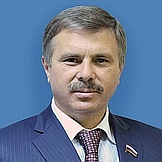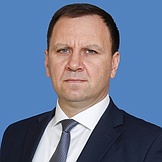Regional flags and emblems


PROFILE
Established 4 June 1992 as Ingush Republic; the Republic of Ingushetia since 1996
Capital Magas
The Republic of Ingushetia is a part of the North Caucasus Federal District
Area 3,100 sq km
Population 534 200 (2025)
Ethnic groups
(2020 National Census, %)
Ingush – 96,40
Chechen – 2,49
Other – 1,11
Administrative divisions (2024)
Municipal districts – 4
City districts – 5
Rural districts – 36
Geography and climate
The Republic of Ingushetia is located in the central part of the northern slope of the Greater Caucasus and the adjoining Chechen Plain. The mountains of the Greater Caucasus are situated in the south and the Tersky Ridge in the north. They are divided by the Sunzha River, which flows from west to east.
The Republic shares borders with two other regions of the Russian Federation, the Republic of North Ossetia-Alania and the Chechen Republic. The Republic has also a state border with Georgia.
The terrain is at higher altitudes, with mountain ridges divided by valleys and canyons. The Greater Caucasus stretches for almost 150 km in Ingushetia. Some peaks in the southern part of the republic are over 3,000 m above sea level (Shan Mountain is 4,451 m) and the mountain ridges (Black Mountains) have many creeks and canyons.
The terrain provides for different climatic zones, which is the republic’s specific trait. The republic has a moderate continental climate. January is the coldest month (the average temperature is −0.8°C), and July is the hottest (the average temperature is +23.5°C).
The republic has several specially protected areas: the Erzi Nature Reserve, the Ingushsky State Nature Sanctuary..
Government
The legislative branch is represented by the People’s Assembly of the Republic of Ingushetia, which is the permanent, representative and only body of legislative authority in the republic.
The People’s Assembly of the Republic of Ingushetia has 32 deputies elected for five years in the single electoral district in proportion to the number of votes cast for lists of candidates.
The current People’s Assembly was elected in September 2021. Its term expires in September 2026.
Executive power in the Republic of Ingushetia is exercised by the Head of the Republic of Ingushetia, the Government of the Republic of Ingushetia and other executive bodies of state power of the republic.
The Head of the Republic of Ingushetia is the republic’s highest-ranking official, who determines the structure of the executive bodies of state power and forms the Government of the Republic of Ingushetia. The Head of the Republic of Ingushetia is elected by members of the republic’s People’s Assembly for a five-year term. The term of the current Head of the Republic expires in September 2029.
The Government of the Republic of Ingushetia is the supreme permanent executive body of state power in the republic. The Prime Minister of the Republic of Ingushetia is appointed by the Head of the Republic with the consent of the People’s Assembly of the Republic of Ingushetia.
Economy and natural resources
The key sectors in terms of the Republic of Ingushetia’s gross regional product are public administration (about 25%), manufacturing (over 6%), agriculture (over 10%), construction (about 12%), and wholesale and retail trade (over 10%).
Processing operations play a significant role in industrial output, accounting for over 50 % of locally produced goods, works and services, alongside electric power, gas and water supply (30%), as well as mineral extraction (over 20%).
Manufacturing includes oil products, non-metals mineral products, metal processing and finished metal products as well as engineering and food industry. Minerals are extracted mainly from explored oil and gas fields as well as limestone, schist, marl and dolomite deposits.
The republic extracts oil, non-associated and dissolved gas (Ingushneftegazprom, Ingushneft, Malgobekneft and the Karabulak Oil Processing Company). During exploration, seven oil and oil and gas fields were found. The republic produces high quality oil (minimum percentage of sulfides and paraffin wax). Oil is transported from the Caspian region to the west via the Baku-Novorossiysk main pipeline through the republic. The North-Caucasus railroad line traverses the territory of the republic. The Magas Airport offers air-services.
The energy complex with its thermal power stations and combined heat and thermal power stations serves as the basis for the production and distribution of electricity, gas and water. With its numerous rivers, Ingushetia has a great hydropower potential. Over 80% of the households have access to the gas distribution networks.
Agriculture traditionally specialises in livestock farming, growing of potatoes, sugar beet and cereals. Conditions are favourable for fruit and grapes. Dairy and meat production and the tobacco industry are well developed.
Cereals (wheat, rye and barley), sugar beets, sunflowers, feed, vegetables and potatoes are the main crops; dairy and meat production are the main areas of livestock farming.
In addition to industry sectors, Ingushetia has a developing construction materials sector. Valuable woods (oak, beech and hornbeam) provide for a growing wood processing industry.
Culture and tourism
The Ingush people are the oldest in the North Caucasus. Their ancestors created a rich, diverse and original culture that is related to the cultures of Caucasus and western Asia. Ingush material and spiritual culture developed through trade, social relations, geographic and historical conditions. The Ingush people developed many professional crafts such as weapon-making, pottery, smithery and jewellery. Metal processing was also common. Local artisans skillfully combine various metal processing methods such as graining, blackening, gilding as well as colourful inlays. Tsecha-Akhk, Tsori, Yevloi, Verkhny Alkun, Egikal, Erzi and Metskhal are the most famous jewellery centres.
The Dzheirakh Canyon is the gem of Ingushetia. Essentially, this is an open-air museum. There are over 100 architectural and historical and natural landmarks, including the Targim Plane and canyons of the Armkhi and Assa rivers with cultural and historical landmarks such as the Albi-Yerdy temples and Tkhaba-Yerdy, the most ancient Christian temple in the Russian Federation, the Borga Kosh Mausoleum, the Vovnushki Castle and the Khamkhi, Targim and Egikal architectural complexes. The Dzheirakh Canyon is a large centre of Ingush culture.
Several architectural landmarks are dated the second millennium B.C. Of course, the unique climate put Dzheirakh in the same class as resorts in Dombai and the Mount Elbrus areas. The Dzheirakh-Assinsky State Historical and Architectural Museum Reserve includes dozens of turrets and many mausoleums and temples. The turrets fit in the mountain landscape perfectly.
A tourism and recreation economic zone was established in the Dzheirakh and Sunzhensky districts. Many fans of environmental tourism and outdoor activities come here every year. The Achaluki mineral springs are used in treating various diseases.


